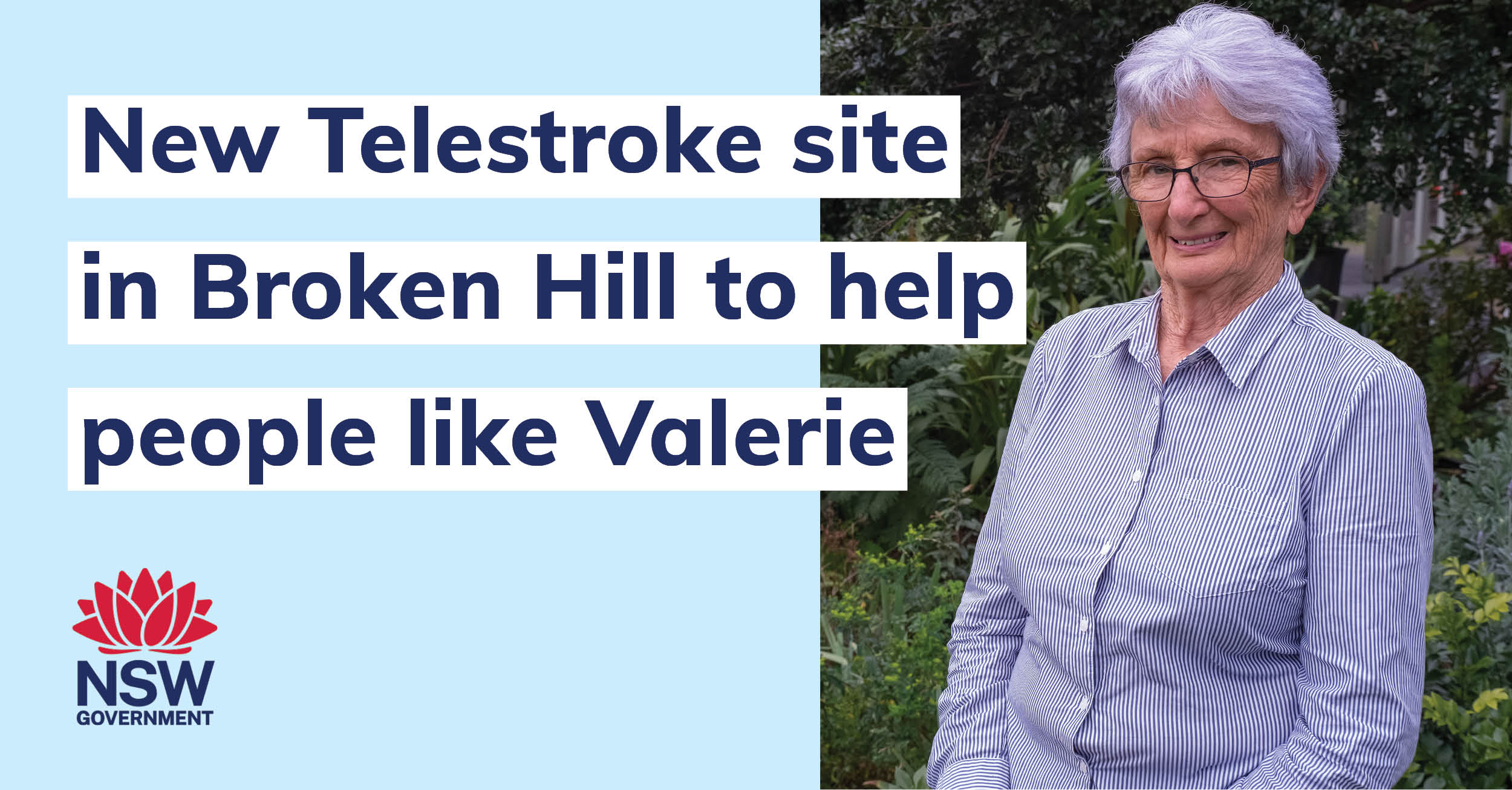Congratulations to Broken Hill, the 23rd and final site to launch the NSW Telestroke Service, making life-saving stroke diagnosis and treatment accessible to people living in regional and rural NSW.
One of the many patients in NSW who has been treated by the NSW Telestroke Service is Valerie, from the Shoalhaven region on the South Coast.
Valerie's son noticed his mother's speech was slurred during a visit to his home. He acted fast and called an ambulance straight away.
Valerie was transported to the Shoalhaven District Memorial Hospital where NSW Telestroke Service Neurologist Dr Carlos Garcia Esperon based at John Hunter Hospital assessed her. By then, Valerie was paralysed on her left side and couldn’t speak.

Dr Esperon prescribed Valerie the appropriate medicine and advised she be transferred to the Prince of Wales Hospital in Sydney for a procedure to remove a blood clot.
“By the next morning my condition had returned to normal and I was kept in hospital for observation for another three nights,” says Valerie.
“I couldn’t be more grateful, knowing strokes can have a permanent impact on your life.”
“My family were so relieved that I received instant care,” she says. “I have told a lot of people about Telestroke and they think it is wonderful.”
“By the next morning I was back to normal, thanks to Telestroke.”
More about stroke
Stroke is an emergency. If you think you are having a stroke, call 000.
The F.A.S.T. test as an easy way to remember the most common signs of stroke. Using the F.A.S.T. test involves asking these simple questions:
- Face Check their face. Has their mouth drooped?
- Arms Can they lift both arms?
- Speech Is their speech slurred? Do they understand you?
- Time Is critical. If you see any of these signs call 000 straight away.